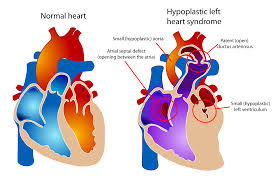Congenital Heart Defect Awareness Month sheds light on the most common birth defect
IMAGE / Courtesy of Mrs. Holly Johnson
Junior Anya Christensen has two types of congenital heart defects.
Congenital heart defects are the most common birth defect, topping both Spina Bifida and Down Syndrome, yet many do not know of them.
February is Congenital Heart Defect Awareness Month, spreading awareness for the millions of people suffering from the conditions.
Congenital heart defects are found at birth. There are currently over 35 defects that are categorized as congenital. Many times, the defects are small and can be fixed with surgery.
Newborns with these defects may experience trouble breathing, feeding difficulties, low birth weight, chest pain, delayed growth, and bluish lips, skin, fingers, and toes.
Adults may experience abnormal heart rhythms, shortness of breath, fatigue, swelling of body tissue or organs, and/or a bluish tint to the lips, skin, or fingernails.
There are seven types of critical defects, including hypoplastic left heart syndrome; pulmonary atresia; Tetralogy of Fallot; Total anomalous pulmonary venous return; transpositions of the great arteries; tricuspid atresia; and truncus arteriosis.

Junior Anya Christensen was diagnosed with Hypoplstic left heart syndrome at birth.
Junior Anya Christensen was diagnosed with two of the critical defects: hypoplastic left heart syndrome and transpositions of the great arteries.
Christensen would like people to know about the defects so that they can be better understood.
“I want people to understand how it can affect other peoples lives,” Christensen said. “It has changed a lot in my life, but it has also made me the person I am.”

Class: Senior
Hobbies: Horseback riding and bowling.
Future Plans: I plan on attending a university to study optometry.
Favorite Book: "The...







